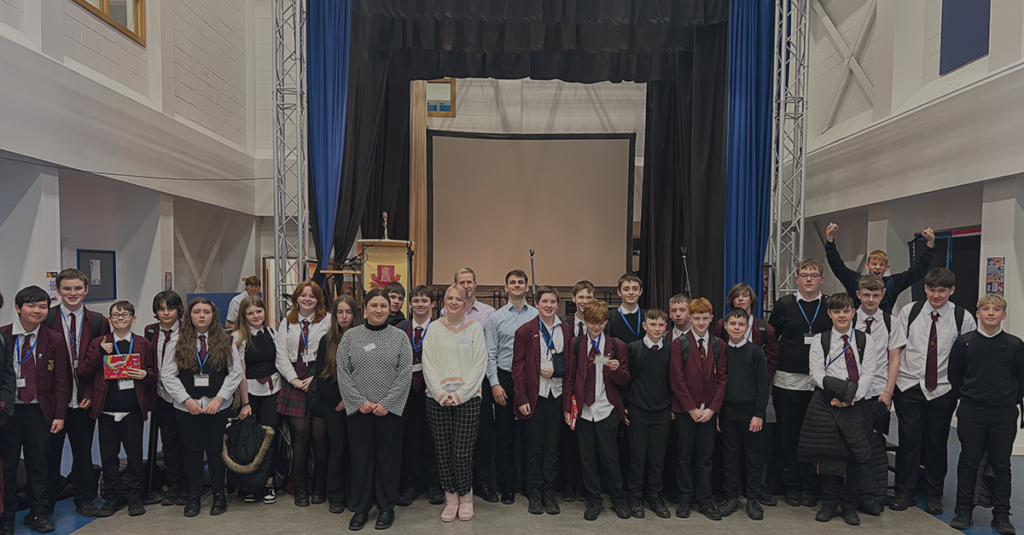Nadara recently hosted a STEM workshop where 30 students learned about the complexities of designing wind farms and used STEM skills of science, technology, engineering and maths to design virtual wind farms.
The event at Strathaven Academy, in Scotland, was held in partnership with 3DW, a company providing interactive 3D models to support planning and consultation activities associated with wind farm development.
During the day, the youngsters were split into teams and tasked with tackling the physical, technical and financial challenges associated with the development of a wind farm. They examined 2D printed maps to understand constraints and where best to place wind turbines before using laptops to create 3D models. These models allowed them to place turbines and cable routes on the virtual site and use measurements to calculate the profitability of their model.
Development Manager, Karl Parker, who was supporting the session said: “At Nadara, we recognise the importance of engaging today the young people who will drive the solutions of tomorrow. Our partnered STEM event at Strathaven Academy is part of our wider effort to inspire the next generation of thinkers and spark a passion for the renewable energy industry in young people.
“It’s vital that we inspire and engage the next generation of leaders and workers in renewable energy, and this is why we’ll continue partnering with schools, communities and companies, and spreading awareness of science and renewable energy.”
The students also gave a presentation to the class, Alan Gardner, Teacher of Physics and Science, the team from 3DW and Karl Parker. The best presentation was chosen based on accurate financial calculations going beyond profit, site design and confidence in the project, with the winning team receiving a well-deserved box of chocolates.
Mr Gardner said: “The STEM event hosted by Nadara and 3DW was great and the pupils really enjoyed themselves. It was highly encouraging to see them so engaged and interested in an industry which will have a big influence on their lives as they grow older. Watching the pupils apply a mix of creative and practical skills to solve real-world problems gave me confidence that programmes like these are helping equip young people with the necessary skills to solve difficult problems.”
The students said they had gained in confidence from presenting and learned useful facts about wind farms, such as the amount of energy and revenue wind farms generate, as well as how long the planning process takes for a wind farm to come into operation.
One said: “I didn’t know it takes years to design a wind farm from start to finish and that most wind turbines are white as this is the least visually obstructive colour. I found the day interesting and the 3D imaging was really fun.”
